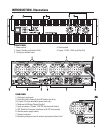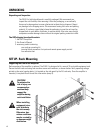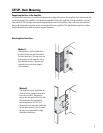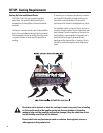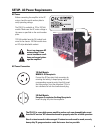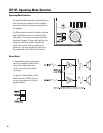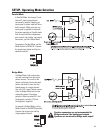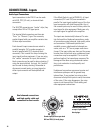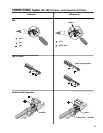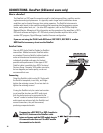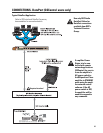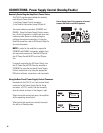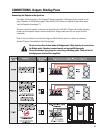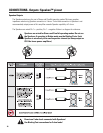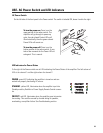
12
Audio Input Connections
CONNECTIONS- Inputs
Input connections to the PL6.0 II can be made
with XLR, TRS (1/4-inch), or terminal-block
connectors.
The XLR/TRS connectors are “combo” style; they
accept either XLR or TRS type inputs.
The terminal block connectors are three-pin
“Euro-” (or “Phoenix-”) type. The accessory
packet shipped with your amplifier contains two
of these input connectors.
Each channel’s input connectors are wired in
parallel (example: Ch1’s combo connector is
wired in parallel with CH1’s terminal block
connector). This is useful for daisy-chaining the
input signal to other equipment. If you are using
the “combo” connector for input, the terminal-
block connector can be used for daisy-chaining. If
using the terminal-block for input, the “combos”
can be used for daisy-chaining. Remember to
disconnect unused inputs; any input signal on
either input connector will be amplified and
output.
Combo input jack accepts both
XLR and TRS (1/4-inch) plugs.
Terminal-block jack
accepts 3-pin terminal-
block plugs.
Use balanced connections
and high-quality cable and
connectors for best results.
If the Mode Switch is set to PARALLEL, all input
connectors (CH1
and
CH2) are connected in
parallel. An input signal applied to any of the four
input connectors will drive the amplifier. Any of
the unused inputs may be used to daisy-chain the
input signal to other equipment. Make sure only
one input signal is applied to the amplifier.
The inputs are electronically balanced. To main-
tain the benefits of balanced connections, make
all connections using balanced, high-quality cable
and connectors. If balanced inputs are not
available, use an unbalanced-to-balanced con-
verter, such as a “DI” box or proper audio trans-
former. If the input cables are short and the venue
location free of electrical noise, unbalanced input
connections may be acceptable. This is not the
preferred method, but sometimes necessary. No
damage will be done using unbalanced connec-
tions, just a reduction in audio quality and
performance.
Unbalanced connections are prone to noise and
interference pickup as well as ground-loop
induced hum. If your system has noise or hum,
disconnect all amplifier inputs to verify the source
of the noise. If the noise disappears, the noise
source is not the amplifier. Check cabling and
other equipment connections.




